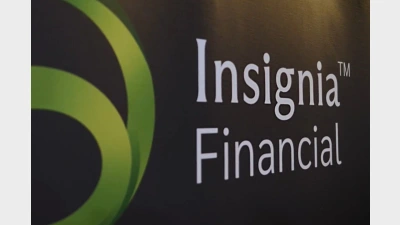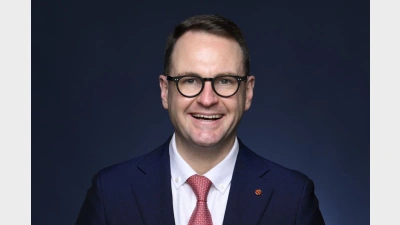Superannuation funds for hire
The size of superannuation funds may be growing as a result of mergers and trustee licensing, but that has not resulted in these larger and better-resourced funds taking functions such as administration back in-house.
In fact, senior spokespersons for major superannuation funds claim there are no suggestions the trend towards outsourcing is about to end any time soon.
Some of the most commonly outsourced functions of superannuation funds are administration, custody, investment management, insurance provision, clearing house services and financial planning and advice.
There are a number of economic and legislative factors that impact the role of trustees in managing superannuation funds and fulfilling their fiduciary responsibilities to members.
The sustained period of out-performance enjoyed by superannuation funds in the last three years, and the subsequent growth in media coverage and awareness, has also had a huge impact on flows between funds.
These and other factors mean superannuation funds are facing an extremely challenging period.
Competition between market players is perhaps stronger than ever before, with industry and retail funds big and small fighting for their share of the market.
AMP Corporate Superannuation director Greg Healy says there is no doubt the focus on external providers has increased in the last five years.
“The reason for that is the licensing regime that’s been brought in.
“[There is a] requirement for trustee boards to discharge their duties appropriately, they’ve had to take a far more objective view. That has encouraged them to access third party expertise for a range of consulting services,” he says.
In the case of AMP Corporate Super, its Signature Super and Custom Super products are run entirely in-house, with the exception of the clearinghouse function, which is performed by Superpartners.
The only product for which they do engage the services of a third party is Super Leader, with the administration conducted by AAS.
The reason for using an external administrator for Super Leader and not the other products is its relative simplicity.
Healy says it is predominantly less sophisticated, using a crediting rate instead of unit pricing, and describes it as “an industry fund look-a-like — it’s pitched at that client base”.
The general rule of thumb AMP uses when determining whether to keep functions in-house or to look for an external provider hinges largely on what is dictated by the actions of competitors and the market in general.
“What we look for is benchmarking our own capability to what the market is saying it can deliver,” Healy says.
The scale of the AMP platform is now approaching $40 billion. Healy says it is able to gain efficiencies from that scale across such a large member base, and that this is one of the reasons why standalone corporate funds approach providers such as AMP to accommodate their services to employees.
“Rather than us outsourcing, it’s others outsourcing to us,” he says.
“We go through the same process with them as we would for a third party investment house.”
According to Healy, AMP is able to leverage its considerable efficiencies of scale in order to help a number of corporate funds maintain their contemporary investment, information technology platform and administration services.
“That scale allows us to continue to invest in those three areas,” he says.
Member education and financial planning are also areas in which it provides outsourced services for clients.
Another aspect of outsourcing Healy refers to is the practice of temporarily transferring the role of trustee to a third party.
He says this became more commonplace last year, as some trustees who provided superannuation services as only a peripheral part of their business decided whether to continue as trustees in the more rigorous licensing regime.
“In a number of instances, trustees chose to do the appropriate analysis to decide whether to go to a fully outsourced option.
“In these cases, they [trustees] outsourced trusteeship as a halfway house to a full outsourcing route,” he says.
Healy makes a number of arguments in favour of the outsourcing framework, particularly for funds that are not of such a size as AMP, which has almost $40 billion of funds under administration.
Maintaining a focus on core expertise is one of the main arguments he posits in support of outsourcing. The increasing sophistication of superannuation is another.
Looking at the changes the industry has undergone in the last 25 years, Healy believes it has changed significantly, prompting many funds to adopt an outsourcing model for various functions of superannuation provision.
Plum Financial Services managing director Mike Fitzsimons makes another argument for outsourcing through its role in keeping various external functions separate from trustee responsibility.
In assessing the investment criteria for an investment manager, Fitzsimons says Plum typically uses an external expert.
“It doesn’t matter whether it’s in insurance or custody, we typically use someone with expertise — this is common throughout all super funds,” he says.
“Every part of the service is outsourced. As a legal structure, they are kept quite separate from Plum FS, which is the administrator, [it’s] an arm’s length process.
In managing its outsourcing partners, Plum has a standardised business model in place to ensure consistency of service and best practice is maintained.
This includes detailed service level agreements (SLAs) that have been scrutinised by the Australian Prudential Regulation Authority (APRA).
Both Fitzsimons and Healy agree that there is a legal and moral obligation for trustees to perform rigorous due diligence in all aspects of their service to members.
“The reason why the trustee is so interested in this is that it’s the trustee’s responsibility to make sure each of these outsourced components is delivering.
“Things aren’t done on a promise, there is hard evidence provided on an ongoing basis,” Fitzsimons says.
Another potential problem is posed by investment asset selection under outsourced providers.
According to Healy, if using more of an in-house structure, it is possible to have an investment mix that is much more customised to the specific fund’s member base.
On the other hand, funds that completely outsource this function will necessarily have a more generic mix of asset classes that are offered to a broader range of the investment manager’s clients.
For Fitzsimons, the only way to mitigate the risks is close and regular scrutiny.
“The key message is that you can’t sit on your hands, you’ve got to make sure you’re continually checking that you’re meeting service standards,” he says.
“[We have] regular catch-ups where we can eyeball investment managers and talk about investment performance. You need to continually run quite robust and regular due diligence exercises as an ongoing part of the trustee’s practice around outsourcing.”
He compares the ongoing monitoring of external providers’ performance to the constant process of maintaining the Sydney Harbour Bridge. “It’s like painting the Harbour Bridge,” he laughs.
For any discussion about outsourcing, Vision Super provides an interesting viewpoint, because it is one of the few funds of a smaller size that run most functions internally.
It has around 100,000 members and maintains funds under management of $3.5 billion.
Vision Super general manager of operations Peter Rowe says there is a misconception that outsourcing business functions brings a reduction in risk for the trustees.
“But there are different risks attached,” he says.
Referring to the experience of Vision, which has its own administration division in-house, he says this gives them full control and allows them to better service members’ interests, and also allows them to get the cheapest possible price by running the service at cost.
He believes another considerable advantage of this is timing.
According to Rowe, running administration or any other function in-house means you run things according to your own business timelines, not that of an external company.
“When outsourcing, you are working to the provider’s timeframes,” he says.
This also means they can spend more focused time on developing internal solutions such as software.
One of the criticisms of keeping most functions in-house, which Rowe entirely rejects, relates to performance monitoring.
He says that some in the industry feel that outsourced partners are better at handling some functions because company management finds it easier to push external parties harder for better outcomes than their own people.
Rowe believes this point of view is a “cop out”, and that obtaining optimum performance from your team is all part of effective management.
Whether functions are run internally or not, “you should be applying the same principles of delivery,” he says.
Looking ahead, he thinks the consolidation of some funds, particularly the emergence of large industry funds like Australian Super, could see more trustees bringing more functions in-house because of their increased scale and capacity to do so.
Citistreet, a partnership between Citigroup and State Street, manages the administration services of a number of superannuation funds.
Citistreet head of client services Neil Sheppard thinks there is a general trend toward back-office outsourcing for most funds because running such functions internally is costly, “capital intensive” and poses greater risks to member benefits.
He divides superannuation fund services into three distinct groups: back-office, mid-office and front office.
With the exception of the front office, which needs to be managed directly by the fund, he says that a combination of in-house and outsourced approaches for mid-office and back-office functions can be adapted as appropriate for individual clients.
Referring to the example of Australian Super, the mega fund formed earlier this year through a merger of the Superannuation Trust of Australia and the Australian Retirement Fund, Sheppard says funds of such a size are able to conduct more functions internally than those with less scale.
“The bigger the fund, the more you can do in-house. The question is where can you add the most value,” he says.
Recommended for you
Future Group is set to take on nearly $1 billion in funds under management (FUM) and welcome more than 100,000 new members following two significant successor fund transfers.
Insignia’s Master Trust business suffered a 1.9 per cent dip in FUA in the third quarter, amid total net outflows of $1.8 billion.
While the Liberal senator has accused super funds of locking everyday Australians out of the housing market, industry advocates say the Coalition’s policy would only push home ownership further out of reach.
Australia’s largest superannuation fund has confirmed all members who had funds stolen during the recent cyber fraud crime have been reimbursed.












